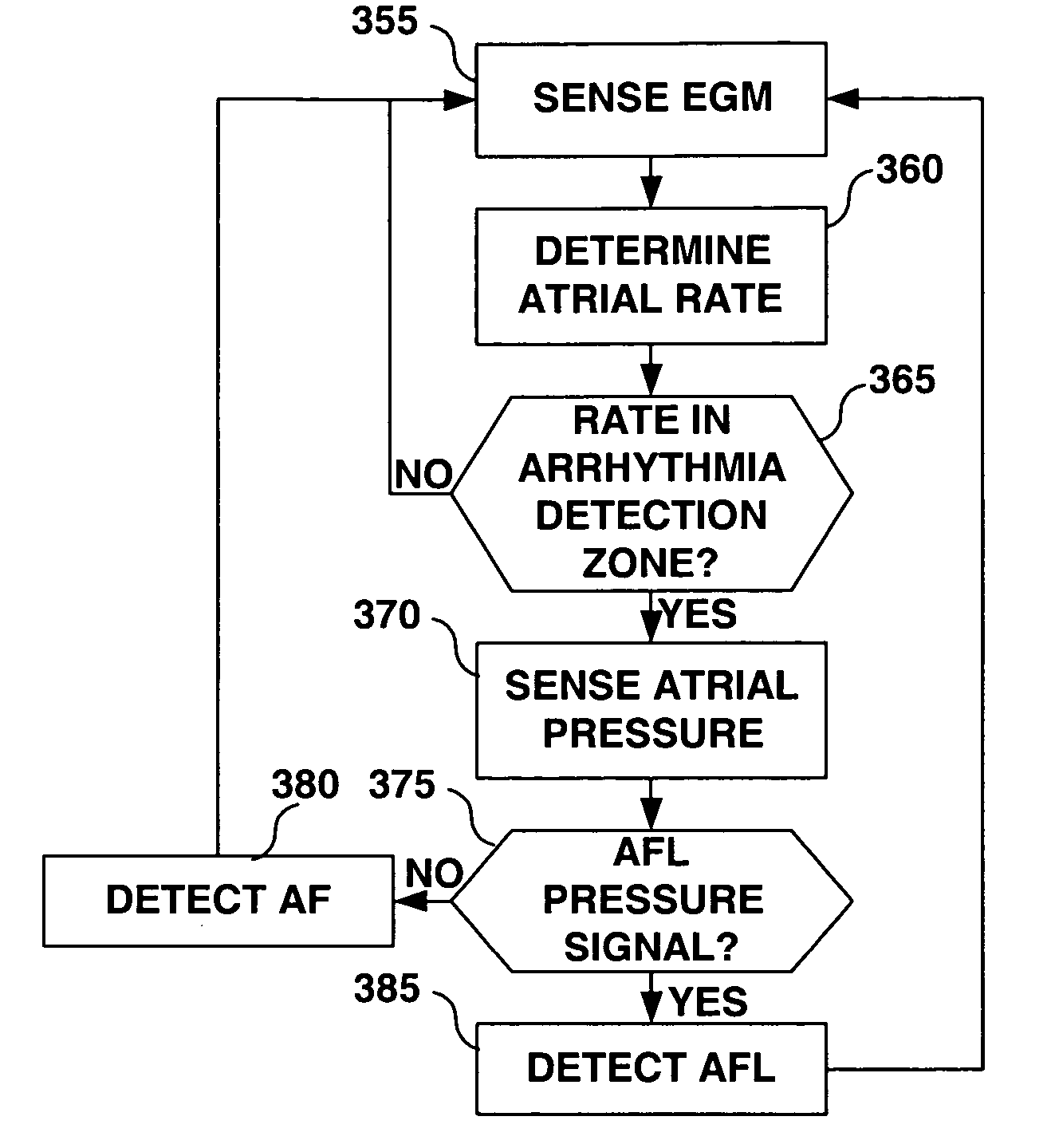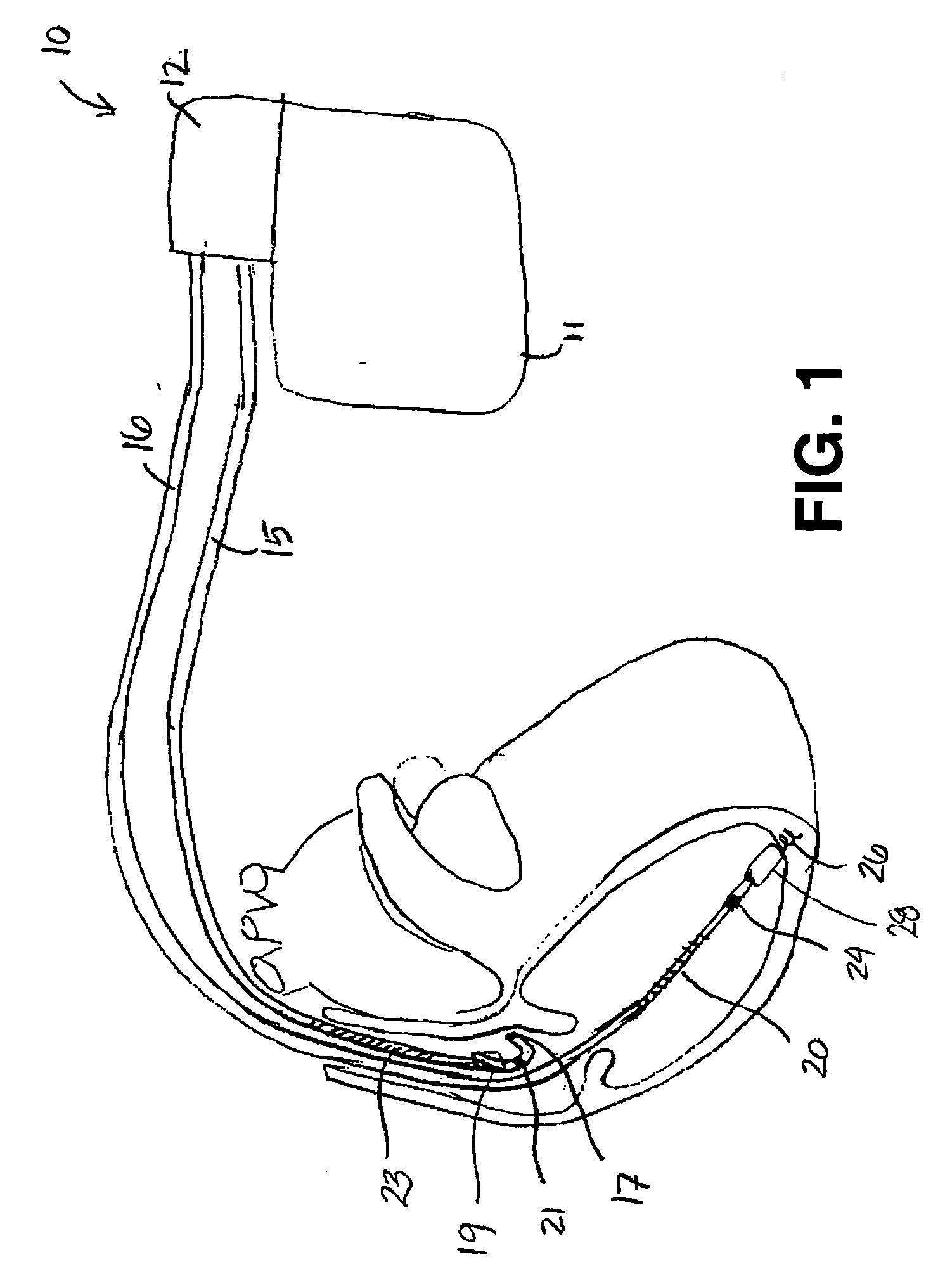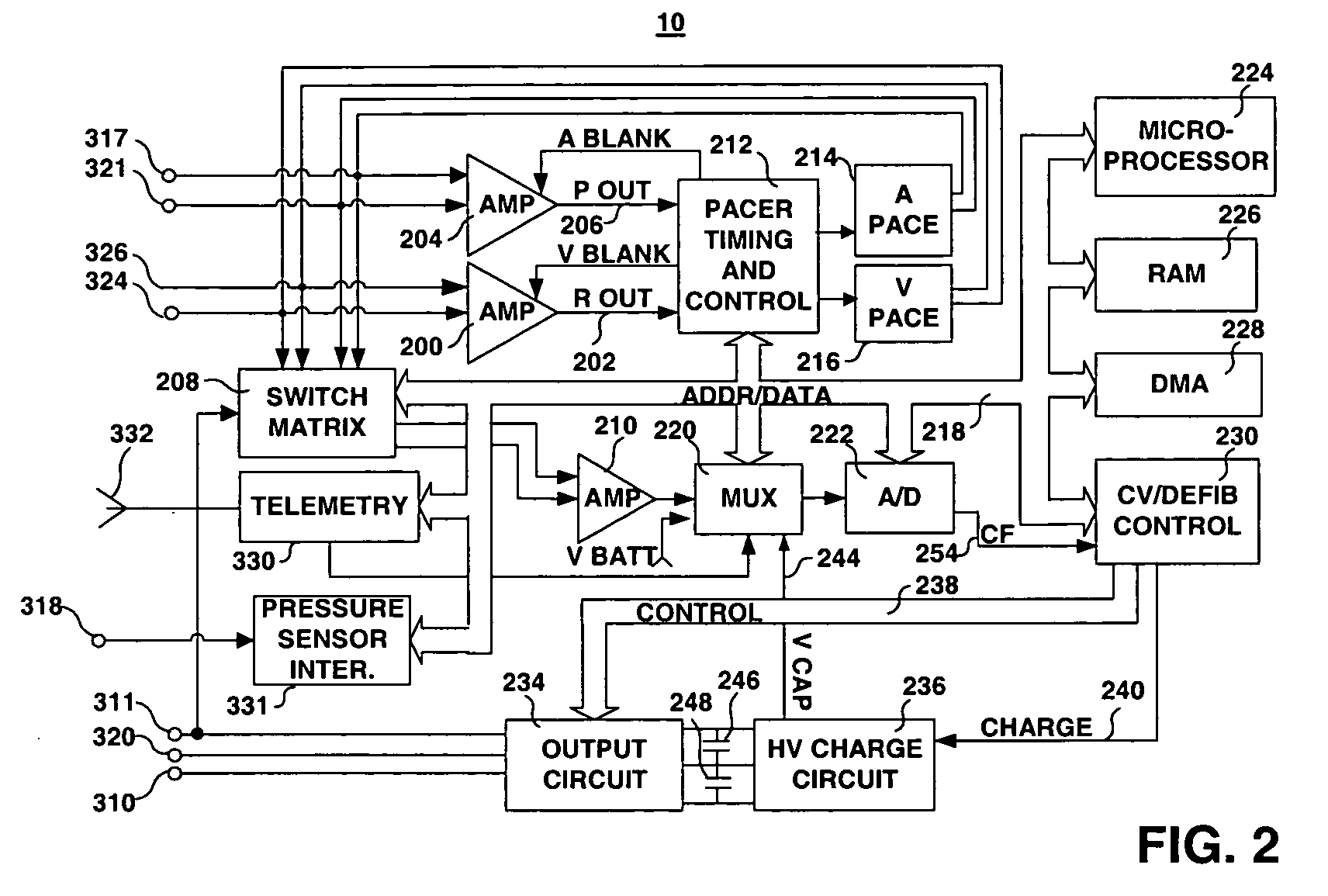Combination of electrogram and intra-cardiac pressure to discriminate between fibrillation and tachycardia
a technology of tachycardia and electrogram, which is applied in the field of implantable cardiac stimulation and monitoring devices, can solve the problems of low efficacy rate, ineffective atrial atp therapies, and disorganized atrial contraction,
- Summary
- Abstract
- Description
- Claims
- Application Information
AI Technical Summary
Problems solved by technology
Method used
Image
Examples
Embodiment Construction
[0022] The present invention provides a system and method for detecting and classifying cardiac arrhythmias based on cardiac electrical and pressure signals. The method includes sensing an EGM signal to derive a cardiac rate; detecting an arrhythmia when the cardiac rate meets arrhythmia detection criteria; sensing an intracardiac pressure signal to derive an indicator of tachycardia; classifying the detected arrhythmia based on the sensed pressure signal wherein the derived indicator of tachycardia is compared to tachycardia detection criteria and the arrhythmia is classified as tachycardia if tachycardia detection criteria are met and the arrhythmia is classified as fibrillation if the tachycardia detection criteria are not met.
[0023] In one embodiment, an atrial EGM signal and an atrial pressure signal are sensed for the detection and classification of atrial arrhythmias. An indicator of atrial tachycardia, referred to herein as atrial flutter or “AFL,” is derived from the atria...
PUM
 Login to View More
Login to View More Abstract
Description
Claims
Application Information
 Login to View More
Login to View More - R&D
- Intellectual Property
- Life Sciences
- Materials
- Tech Scout
- Unparalleled Data Quality
- Higher Quality Content
- 60% Fewer Hallucinations
Browse by: Latest US Patents, China's latest patents, Technical Efficacy Thesaurus, Application Domain, Technology Topic, Popular Technical Reports.
© 2025 PatSnap. All rights reserved.Legal|Privacy policy|Modern Slavery Act Transparency Statement|Sitemap|About US| Contact US: help@patsnap.com



